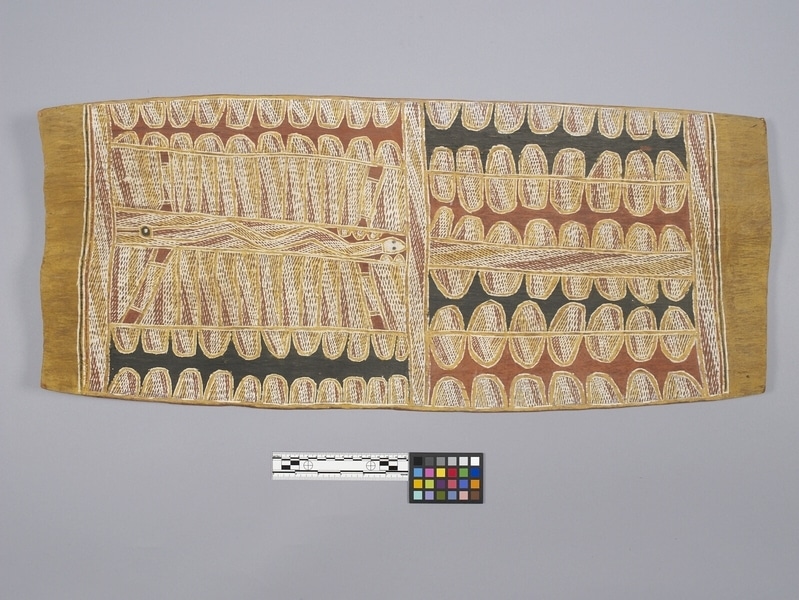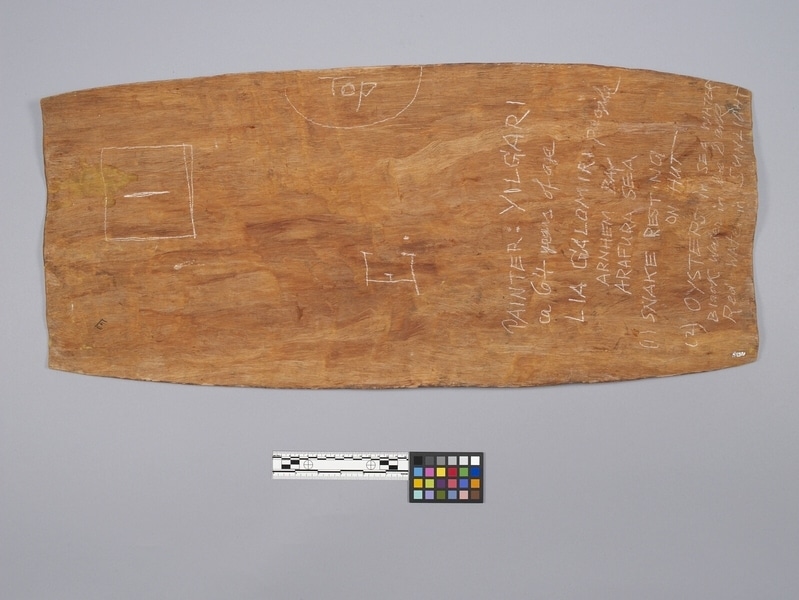Bark Painting Item Number: C1697 from the MOA: University of British Columbia


Description
Bark painting divided into two sections; each section contains an arrangement of abstract looking patterns that are said to represent a snake, oysters and water. Inscription in white chalk on back.
History Of Use
In western Arnhem Land, paintings migrated from rock walls to bark shelters, where they were used to illustrate the ancestral and transformation stories told during the wet season. In northeastern Arnhem Land, sacred clan body painting designs were transferred to bark in response to the demand for portable art from missionaries and anthropologists. In the 1930s missionaries asked Milingimbi artists to produce bark paintings for sale in the cities.
Iconographic Meaning
The painting depicts events associated with Yulunggul, the mythic Rainbow Snake who travelled across the swamp country in Australia’s Northern Territory. "The snake is resting on the rails of a hut. The four forks of the supporting poles are at the four corners. The snake is guarding an area that makes up a camp. The semicircular shapes are oysters in the salt water. The black is the water of dark colour (in the shadow), the red is the water with the light."
Item History
- Made by Yilgari (Maker) in Milingimbi, Northern Territory, Australia before 1957
- Owned by University of Melbourne before 1957
- Received from University of Melbourne (Exchanger) during 1957
What
Who
- Culture
- Australian: Galomiri
- Creator
- Yilgari (Maker)
- Previous Owner
- University of Melbourne
- Received from
- University of Melbourne (Exchanger)
Where
- Holding Institution
- MOA: University of British Columbia
- Made in
- Milingimbi, Northern Territory, Australia
When
- Creation Date
- before 1957
- Ownership Date
- before 1957
- Acquisition Date
- during 1957
Other
- Item Classes
- paintings
- Condition
- good
- Current Location
- Case 61
- Accession Number
- 1839/0001